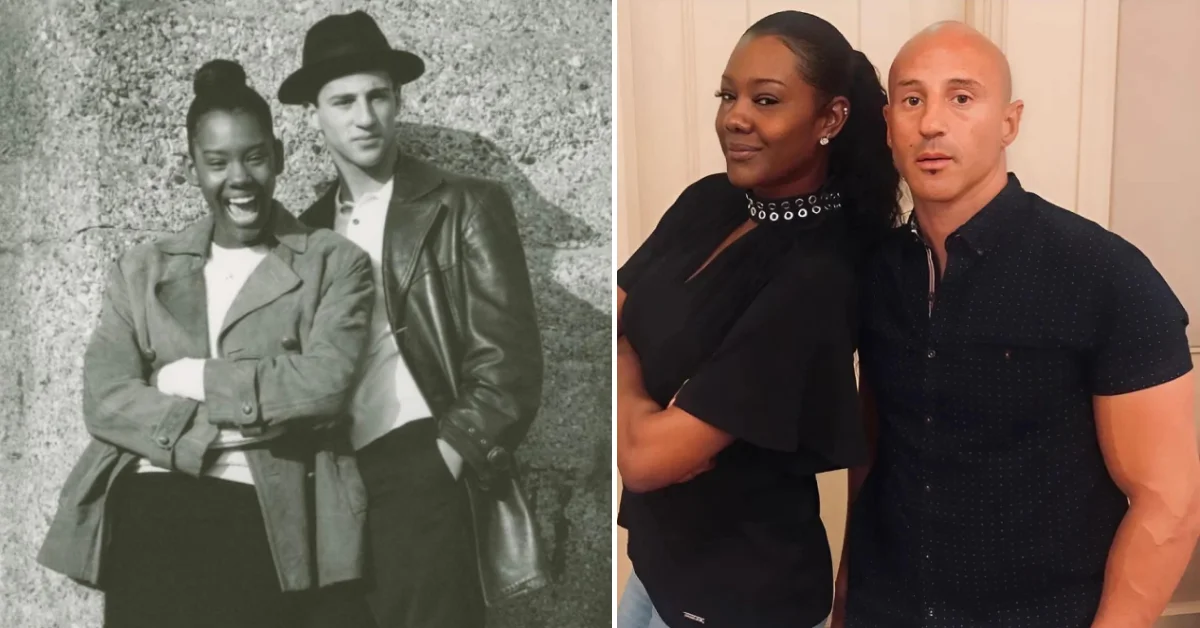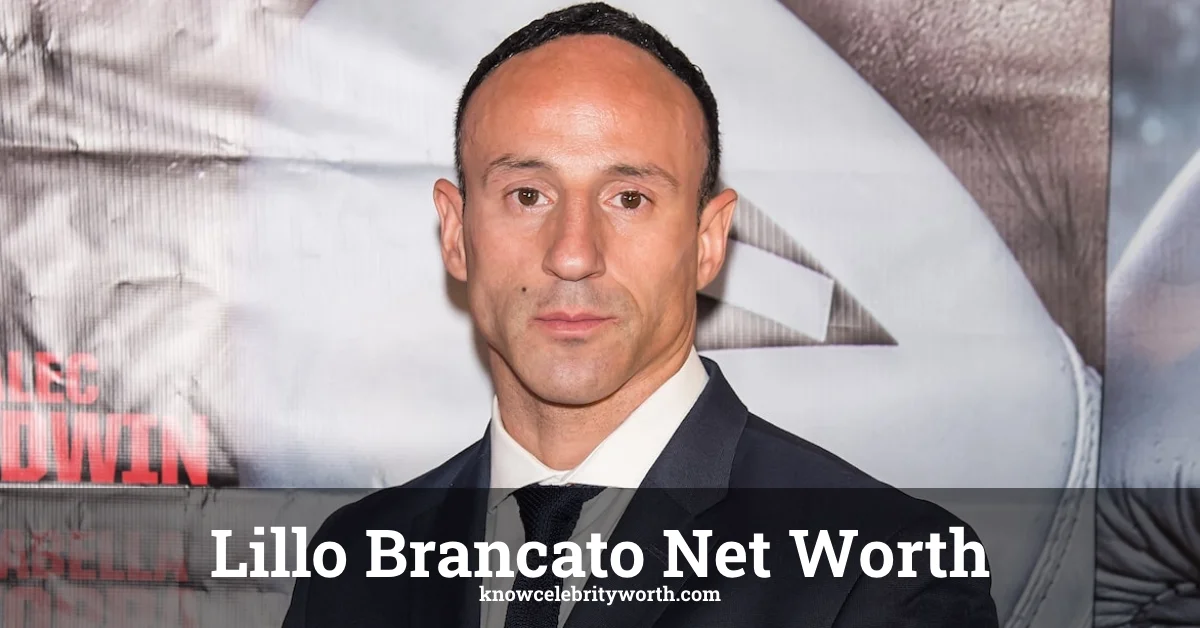Lillo Brancato Jr. rose to fame as a promising actor in the 1990s, but his career took a dramatic turn following legal troubles.
Let’s look at his financial journey and where he stands today.
Lillo Brancato Net Worth
Lillo Brancato’s net worth sits at approximately $10,000 in 2025. This figure marks a stark contrast to his early career earnings when he starred alongside Robert De Niro in “A Bronx Tale” and appeared in HBO’s hit series “The Sopranos.”
Brancato’s current financial situation reflects the lasting impact of his legal troubles and time in prison. While many actors from his era built multi-million dollar fortunes, Brancato’s career interruption prevented similar wealth accumulation.
For comparison, his “A Bronx Tale” co-star Chazz Palminteri has amassed a net worth of around $16 million, while Robert De Niro’s fortune exceeds $500 million. Even fellow “Sopranos” actors who played minor roles typically hold net worths between $1-5 million.
Brancato earned approximately $25,000 for his breakout role in “A Bronx Tale” – a substantial sum for a debut actor in 1993. His earnings grew through the 1990s with roles in films like “Renaissance Man” and “Crimson Tide.” His casting as Matthew Bevilaqua in “The Sopranos” marked the peak of his earning potential, with HBO series actors typically earning $50,000-$100,000 per episode during that era.
Acting Career

Brancato’s acting career began with a stroke of luck when Robert De Niro spotted the then-teenager outside a swim club in Yonkers, New York. De Niro cast the young Brancato in “A Bronx Tale” (1993), noting his strong resemblance to a young De Niro.
The role launched Brancato into Hollywood, earning him both critical acclaim and public recognition. He capitalized on this momentum with parts in “Renaissance Man” (1994) and the submarine thriller “Crimson Tide” (1995). His career continued to grow with appearances in “Enemy Territory” and smaller films throughout the late 1990s.
His casting in “The Sopranos” as Matthew Bevilaqua in 2000 brought him back into the spotlight. Though his character appeared in just eight episodes, the role cemented his place in one of television’s most acclaimed series.
But Brancato’s career began showing signs of trouble. Roles became scarcer, and the quality of productions declined. His battle with drug addiction contributed to his professional difficulties, making him less reliable on set and limiting his casting opportunities.
By the early 2000s, before his arrest, Brancato’s career had already begun trending downward, with appearances mainly in low-budget productions. His final pre-prison roles came in little-known films like “In the Shadow of the Trees” and “Slingshot.”
Legal Troubles
The turning point in Brancato’s career and finances came on December 10, 2005. That night, Brancato and his associate Steven Armento attempted to break into a Bronx apartment they believed contained prescription drugs. The burglary went wrong when off-duty police officer Daniel Enchautegui, who lived next door, confronted the pair.
During the confrontation, Armento shot and killed Officer Enchautegui. Though Brancato did not fire the weapon, his participation in the burglary led to serious charges. Armento received a life sentence without parole for the murder. Brancato faced first-degree murder charges but was ultimately convicted of first-degree attempted burglary.
The court sentenced Brancato to 10 years in prison in 2009. He served his time at various facilities, including the Hudson Correctional Facility in New York State.
The financial impact proved devastating. Legal fees drained his savings, with criminal defense attorneys typically charging $50,000-$100,000 for high-profile cases. Without the ability to work, Brancato earned no income during his incarceration from 2005 to 2013. Any residual payments from past work likely went toward legal expenses.
His conviction also made him essentially unhirable by major studios and networks. Hollywood’s insurance policies often prevent hiring actors with serious criminal records, particularly for violent offenses. This barrier eliminated most mainstream earning opportunities, forcing Brancato toward independent productions with much lower pay scales once released.
Net Worth Growth Over Time
Brancato’s financial trajectory shows a clear pattern of rise and fall:
Early Career (1993-1999): Following “A Bronx Tale,” Brancato’s estimated net worth grew to approximately $200,000-$300,000 through steady film work. This period marked his financial ascent as roles came regularly.
“Sopranos” Peak (2000-2001): His appearance on “The Sopranos” likely pushed his net worth to its highest point, potentially reaching $500,000-$750,000. Industry estimates suggest supporting actors on premium cable shows earned $20,000-$30,000 per episode during this era.
Pre-Arrest Decline (2002-2005): As his drug problems worsened and roles diminished in quality, Brancato’s finances suffered. His net worth likely dropped to $250,000-$400,000 as income became sporadic and addiction consumed resources.
Incarceration Period (2005-2013): The most dramatic financial collapse occurred during his prison term. Legal fees, lack of income, and ongoing expenses reduced his net worth to nearly zero. Any assets like property or vehicles were likely sold to cover legal expenses.
Post-Prison Rebuilding (2013-Present): Since his release, Brancato has slowly rebuilt his finances through independent films, speaking engagements about addiction recovery, and occasional television appearances. These efforts have resulted in his current modest net worth of around $10,000.
His current income sources include:
- Independent film roles paying between $1,000-$5,000 per project
- Speaking fees at recovery events and educational institutions
- Small residual payments from streaming of his earlier work
- Social media partnerships and appearances
The dramatic decline from his peak earnings shows how quickly legal troubles can erase years of financial progress, especially in the entertainment industry where public image directly impacts earning potential.
Life After Prison
Brancato received parole in December 2013 after serving eight years of his ten-year sentence. Upon release, he faced the challenge of rebuilding both his personal life and professional career.
His first post-prison acting role came in the 2017 thriller “Dead on Arrival,” marking his return to film after more than a decade. Since then, he has appeared in several independent productions, including “Made in Mexico” (2021) and “Sleepyhead” (2022).
In interviews following his release, Brancato has spoken openly about his sobriety journey and expressed remorse for his actions that led to Officer Enchautegui’s death. He now frequently speaks to youth groups about the dangers of addiction and poor decision-making.
“Prison saved my life,” Brancato stated in a 2018 interview. “I was on a path to death with my addiction. While I deeply regret the circumstances, especially the loss of Officer Enchautegui, I’ve worked every day since my release to honor his memory by helping others avoid similar mistakes.”
This redemption narrative has helped Brancato slowly rebuild his professional reputation, though mainstream Hollywood remains largely closed to him. Most of his work comes through independent filmmakers willing to look beyond his criminal record.
Financial recovery has proven even more challenging than career rehabilitation. Starting essentially from zero upon release, Brancato has had to rebuild his finances while managing the restrictions that come with being a convicted felon. Banking limitations, housing challenges, and employment barriers have all complicated his financial recovery.
Despite these obstacles, Lillo Brancato maintains a positive outlook. In recent interviews, he emphasizes gratitude for second chances and focuses on his sobriety, which he counts as his most valuable asset. “Money comes and goes,” he said in a 2024 interview, “but staying clean and helping others – that’s worth more than any bank account.”
“I don’t measure success by money anymore,” Brancato explained in a recent interview. “I measure it by days sober and people I might help by sharing my story.”
Moving Forward
At 49 years old in 2025, Brancato still has time to rebuild some financial stability. While unlikely to return to mainstream Hollywood success, several paths could improve his financial outlook:
Documentary opportunities about his life story may provide more substantial paydays than independent films. Streaming platforms have shown increasing interest in true crime and redemption narratives.
A potential memoir could generate advance payments and royalties while allowing Brancato to tell his story in his own words.
Expanded speaking engagements at universities, recovery centers, and criminal justice reform events might create a more reliable income stream than acting.
Mentoring and youth outreach work, while often not highly paid, could establish Brancato in a new career path with more stability than the uncertain nature of independent film projects.
While Brancato will likely never regain the financial trajectory he was on in the late 1990s, his story remains unfinished. His commitment to sobriety and making amends suggests someone focused on values beyond net worth.
The Bottom Line
Lillo Brancato’s net worth of approximately $10,000 in 2025 reflects one of Hollywood’s most dramatic financial downfalls. From promising beginnings alongside Robert De Niro to prison and near financial ruin, his story chronicles how quickly fortunes can change.
His current modest financial standing stems directly from his 2005 arrest and subsequent imprisonment, which derailed what might have been a lucrative acting career. While he continues to work in independent films and speaking engagements, his earning potential remains severely limited by his criminal record.
For fans of “A Bronx Tale” and “The Sopranos” who search for updates on Brancato, his financial status tells only part of the story. Behind the numbers lies a complicated journey of talent, addiction, tragic choices, punishment, and efforts at redemption.
What financial success means for Brancato today differs greatly from his early career aspirations. By his own admission, maintaining sobriety and helping others avoid similar mistakes now outrank wealth accumulation among his priorities.
As Brancato himself might say, his true worth today lies not in his bank account but in the lessons his story might offer others about the high cost of poor decisions and the challenging, imperfect nature of second chances.
